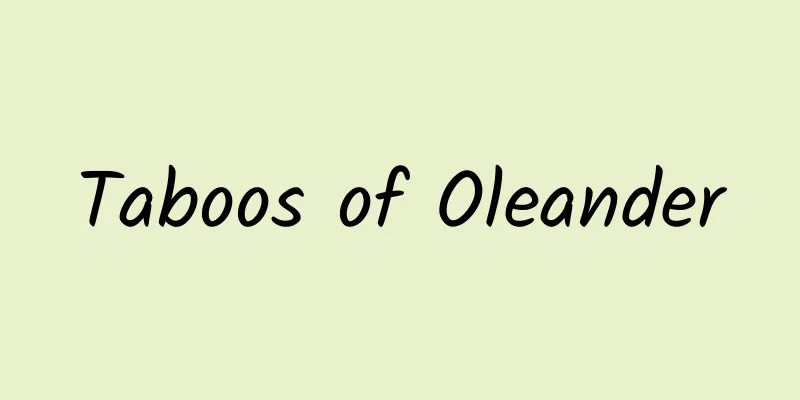Medicinal value of Phytolacca

|
Phytolacca is a relatively common plant. I believe everyone can see it in front of or behind houses, in gardens, or on garbage dumps. But few people know that it is also a traditional Chinese medicine. Its roots can be used as medicine, but they contain certain toxicity and can cause death if consumed. The roots of Pomelo are generally used for external application or boiled in water, but attention should be paid to the dosage. It can treat edema, athlete's foot, carbuncle and other diseases. It also has the effects of relieving cough and asthma, removing expectorant and anti-inflammatory, and diuresis. In addition to its medicinal value, the young stems and leaves of Phytolacca americana are edible, and its fruits contain tannins that can be made into tannin extract. Clinical application: Smilax glabra can expel water and reduce swelling, and its effectiveness is second only to that of Daphne genkwa, Gelsemium elegans and Euphorbia dahurica. It is mainly used for its diuretic effect to treat renal edema. However, due to its severe toxicity, oral administration should be carried out with extreme caution. It has been reported that if 5g of Phytolacca americana and 60g of pork belly (half fat and half lean pork) are boiled into a soup (only the soup is drunk), the toxicity of Phytolacca americana can be reduced. In the past, Shanglu mixture (Shanglu, Alisma, Eucommia) was used to treat edema caused by chronic nephritis in patients with good physical condition. It has a certain effect, can increase urine volume and reduce edema, but this prescription has been less used in recent years. In short, due to the high toxicity of Rhizoma Phytolaccae, it should be used with caution in clinical practice. Pregnant women should not use. The common name of Pyrola is Pyrola. It is the dried rhizome of Zingiber officinale, a plant of the Zingiberaceae family. It tastes sour and spicy, is slightly cold and slightly toxic. Contains saponins, acids and organic acids. Functions: diuresis, detumescence, detoxification and itching relief. It is used to treat edema caused by acute nephritis in children and also to treat urinary tract infections. Use the decoction externally to wash the affected area to treat urticaria. The dosage is 3 to 15 g for decoction. For external use, apply in appropriate amount. The prescription for acute nephritis is: 15g of Camphorwood head, 9g of Yingbubo, 15g of Imperata root, 9g of Agrimoniae, 9g of Plantago seed, decocted in water and taken orally. It is reported that this prescription is effective for treating acute nephritis in children. Phytolacca cannot survive in relatively cold places, but it can be found everywhere in warm areas. The white and plump roots of Phytolacca are used as medicine. Smilax glabra is a cold plant. People with weak spleen and stomach should not take Smilax glabra to treat diseases, as it will aggravate spleen and stomach discomfort. Pregnant women should not eat Chinese pomelo as it may cause the risk of miscarriage, and taking large doses can be life-threatening. |
<<: What are the medicinal values of Cnidium monnieri?
>>: What are the medicinal values of snakeberry?
Recommend
Why do non-smokers also get lung cancer?
According to the World Cancer Report 2020 release...
What are the effects of the traditional Chinese medicine Poria
Poria is used for patients with kidney deficiency...
What are the effects and side effects of Ginkgo biloba leaves?
What are ginkgo leaves? I believe many people don...
Aristotle, a man often "overthrown" in textbooks
I wonder if you have noticed such a man in your s...
The efficacy and role of blood party
Xuedang is a traditional Chinese medicinal materi...
When you feel depressed, adding some sugar, can sweets really make you happier?
Although it is not good for your slim figure, hea...
Floods in the south and droughts in the north, why is the weather so strange this year?
In the past month, heavy rainfall occurred in man...
The efficacy and function of white taro peel
Nowadays, our living standards are constantly imp...
The efficacy and function of pearl ginseng leaves
The Chinese medicinal herb Ginseng Leaf is alread...
The efficacy and function of Sichuan Niu Paint
In life, many women have some gynecological disea...
Smart masks are here! Make breathing more "smart"
Author Li Chuanfu Recently, scientists published ...
How long does bile duct stone surgery take?
The best treatment for bile duct stones is surger...
The role and efficacy of Eucommia ulmoides
From ancient times to the present, Eucommia ulmoi...
Toxicity and detoxification of raw pinellia
Pinellia is one of the most common tree herbs. It...









